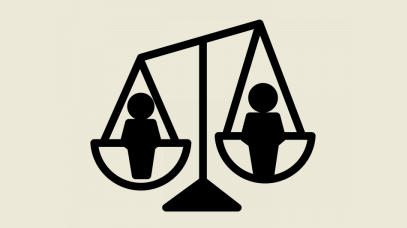Every year on November 20th, “World Children’s Day”, also known as “Universal Children’s Day”, is celebrated to raise global awareness among children, bring them together, and take steps to improve their well-being. The United Nations Children’s Fund, or UNICEF, supports and coordinates this special day, which also aims to improve the health of children. It is an annual commemorative date observed in honor of children, with the date varying by region. The UN General Assembly adopted the Declaration of the Rights of the Child on November 20, 1959, which is a significant date. The UN General Assembly adopted the Convention on the Rights of the Child on this day in 1989. Since 1990, World Children’s Day has also commemorated the date on which the United Nations General Assembly adopted both the Declaration and the Convention on the Rights of the Child. In Geneva, during the World Conference on Child Welfare in 1925, the first International Children’s Day was declared. The Women’s International Democratic Federation in Moscow declared 1 June as the International Day for the Protection of Children on November 4, 1949. Since 1950, 1 June is celebrated as Children’s Day in many Communist and post-Communist countries. On December 14, 1954, the United Nations General Assembly proposed that beginning in 1956, all countries hold an annual event known as Universal Children’s Day to promote global fraternity and understanding among children and to promote children’s welfare. Individual countries should select a suitable date for this case, according to the recommendations. At the time, the United Nations General Assembly agreed that all countries designate a “suitable” date for Children’s Day. Many countries heeded this advice, and Universal Children’s Day has been observed annually on November 20 since then.
Mothers and fathers, teachers, nurses, and physicians, political officials and civil society advocates, religious and community elders, business leaders and media practitioners, as well as young people and children themselves, can all help to make World Children’s Day meaningful to their families, cultures, and nations. Children have a right to food, health care, education, and protection from exploitation, according to the UN Declaration on the Rights of the Child. The Declaration took the bold step of affirming these rights for all children and making it the international community’s responsibility to prioritize children’s rights in planning. On November 20, 1989, the United Nations adopted the United Nations Convention on the Rights of the Child (UNCRC). It is an international treaty that establishes children’s legal, fiscal, educational, health, and political rights. Many schools and other educational institutions make a concerted effort to educate children about their rights under the UN Declaration of the Rights of the Child and the UN Convention on the Rights of the Child. Teachers encourage students to consider the distinctions between themselves and others and to clarify the concept of “freedom.” Teachers in countries where children’s rights are generally respected may draw attention to situations in other countries where this is not the case. Despite economic and social development in recent decades, children’s welfare has been largely ignored, especially in developing and third-world countries. Their rights are being violated in almost every region, and they are being physically and psychologically abused. UNICEF organizes activities in certain countries to raise awareness of children’s rights. This may include generating worldwide awareness in the media or launching national campaigns, such as on the benefits of immunizations or breastfeeding. Despite the decline in recent years, there are still millions of hungry children around the world. According to a study, half of all children under the age of five suffer from “hidden hunger,” which is described as a lack of essential nutrients. Education is a critical factor in a child’s overall growth. One of the goals of Universal Children’s Day is to improve the educational system under which our children are educated. It’s a complicated system that needs to be updated on a regular basis and constantly monitored. UNICEF is constantly working to improve the educational environment. Universal Children’s Day is more than just a day to celebrate children for who they are; it’s also a day to raise awareness about children who have been victims of violence in the form of bullying, exploitation, and prejudice all over the world. Some countries use children as laborers, while others are engulfed in violent strife, living on the streets, and suffering from inequalities such as religion, minority problems, and disabilities. About 153 million children between the ages of 5 and 14 are currently forced into child labor. In 1999, the International Labour Organization passed a resolution prohibiting and eradicating the worst forms of child labor, such as slavery, child trafficking, and child pornography. On November 20, several nations, including Canada, New Zealand, and the United Kingdom, commemorate the anniversaries of the Declaration of the Rights of the Child and the Convention on the Rights of the Child by holding Universal Children’s Day events. Other nations, however, hold activities on various days, such as the fourth Wednesday in October in Australia and November 14 in the United States (India). In the United States, Universal Children’s Day is not observed, but a similar commemoration, National Child’s Day, is celebrated on the first Sunday in June. World Children’s Day provides each of us with an inspiring starting point for advocating for, promoting, and celebrating children’s rights, which we can then translate into dialogues and actions that will help children live in a better world.
















